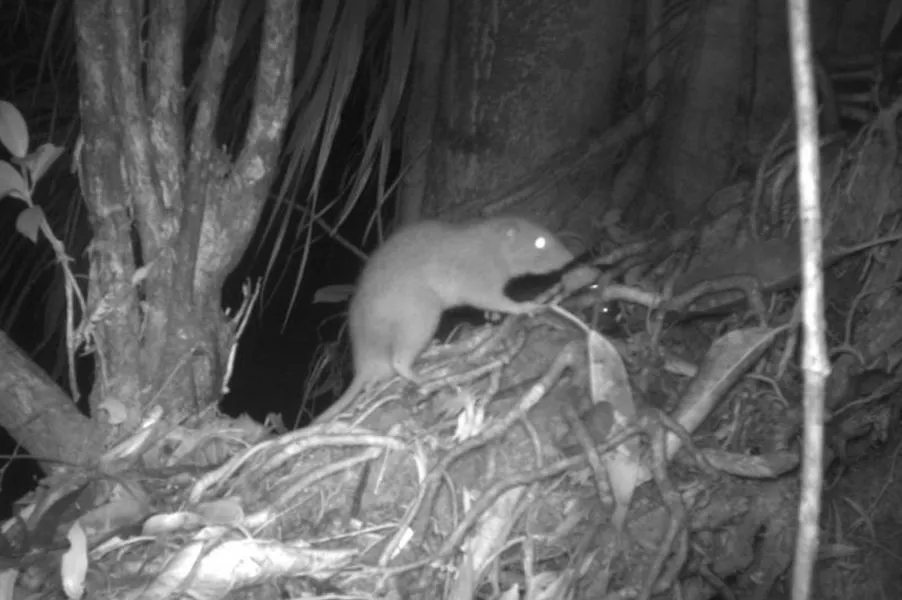In 2017, scientists discovered a new species of giant rat that can reportedly crack open coconuts. Now, this extremely rare creature has been captured in the wild on camera for the first time.
Locals living on the Solomon Islands have long told stories of huge rats that scurry around in the trees, and it was even claimed they could chew into coconuts with their teeth. Whether or not such animals really existed, or whether people were misidentifying known rat species, remained a mystery.
That is until 2017, when a team of scientists from the Field Museum in Chicago found a single living specimen during an expedition and confirmed through DNA analysis that it was from a brand new species. Named the Vangunu giant rat (Uromys vika), the animals can weigh up to 1 kg (2.2 lb) and measure up to 45.7 cm (1.5 ft) long, making it three to four times bigger than a typical black or brown rat.
At the time, it was presented to the world through illustrations, but now the first ever photos of the Vangunu giant rat have been snapped. Camera traps were set up around the island of Vangunu, guided by the local people’s knowledge of the animals. And sure enough, the rats showed up in 95 photos, which the team determined represented four individuals.

Unfortunately, these might be some of the only photos that will ever be taken of the Vangunu giant rat. Even though the species was only discovered a few years ago, their rarity has fast-tracked them to the critically endangered list, and their homes around Zaira Village are under threat.
“The images show the Vangunu giant rat lives in Zaira’s primary forests, and these lands (particularly the Dokoso tribal area) represent the last remaining habitat for the species,” said Dr. Tyrone Lavery, lead author of the study. “Logging consent has been granted at Zaira, and if it proceeds it will undoubtably lead to extinction of the Vangunu giant rat.”
The team hopes that the new photos of the species may help raise awareness for its conservation efforts.
The research was published in the journal Ecology and Evolution.
Source: University of Melbourne




